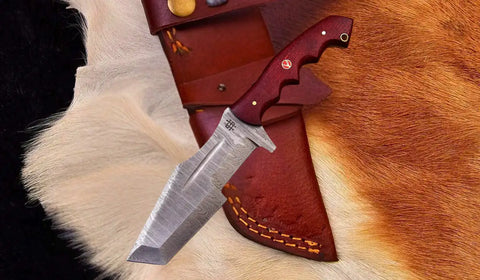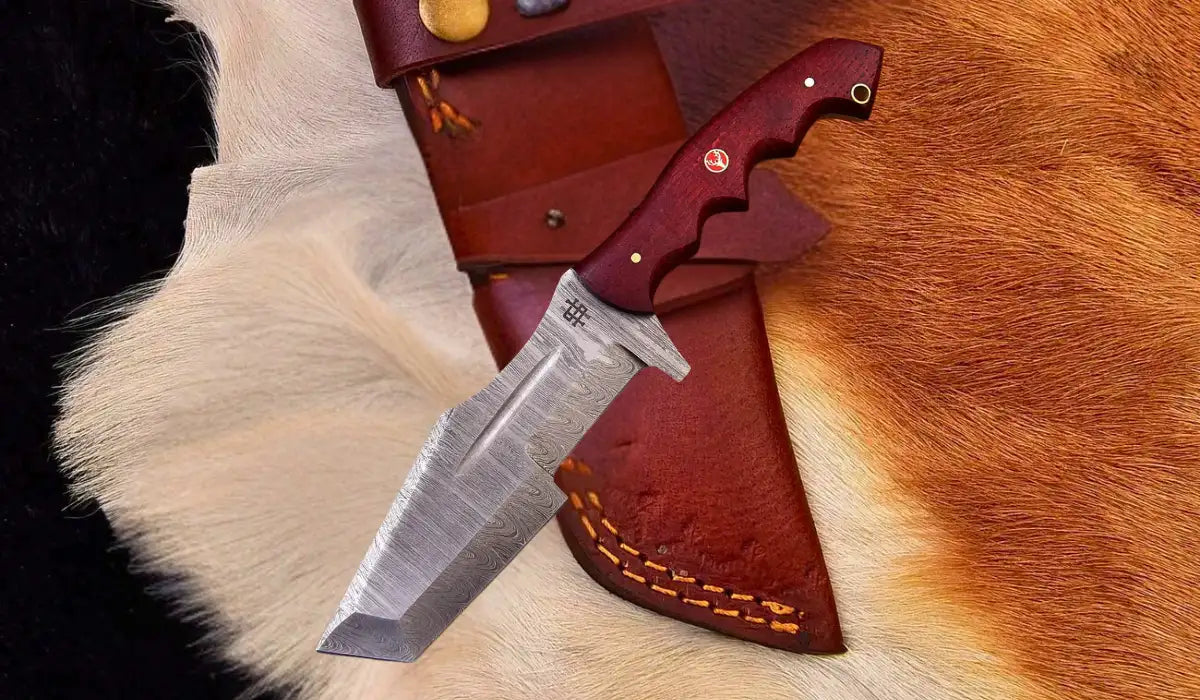Choosing the Right Hunting Knife for Your Next Outdoor Adventures
A quality hunting knife is indispensable for outdoor enthusiasts. Whether you're camping, ziplining, or navigating the wilderness, having the right knife can make all the difference. A hunting knife does more than just cut; it becomes your trustworthy companion for various tasks, ensuring your outdoor experience is successful and enjoyable.
The Essential Role of a Hunting Knife
Utility Beyond Hunting
While a hunting knife is designed primarily for game processing, its utility extends beyond the hunting realm. When camping or engaging in outdoor adventures, a hunting knife is invaluable for a multitude of tasks. You can use it to prepare food, cut ropes, or carve wood to create kindling. Its versatility makes it an essential tool for adventure camping.
Safety and Security
Bringing a hunting knife on your outdoor adventures also provides a sense of safety. In the event of an emergency, a quality knife can be a vital tool for self-defense or for managing challenging situations. Whether you encounter rough terrain or need to clear a path through dense vegetation, your hunting knife will be crucial.
Key Features to Look for in a Hunting Knife
Blade Material and Design
The blade is perhaps the most critical aspect of any hunting knife. High-quality steel is essential for ensuring longevity and durability. Look for materials like Damascus steel, which not only offers strength but also aesthetic appeal. The blade's design—whether drop point, clip point, or skinning blade—should align with your intended use. Choosing the right design can enhance efficiency when dressing games or performing other outdoor tasks.
Handle Comfort and Grip
Equally important as the blade is the knife's handle. A comfortable grip can drastically influence your control and effectiveness during use. Look for handles made from materials like Micarta or rubber, which provide a non-slip surface. Ergonomics should also be considered; a well-designed handle will reduce hand fatigue during prolonged use, making your outdoor adventures more enjoyable.
Fixed Blades vs. Folding Knives
Benefits of Fixed Blade Knives
Fixed-blade knives are often regarded as the more robust option. They feature a sturdier design, making them ideal for heavy-duty tasks such as field dressing large game. These knives are typically easier to clean and maintain since they lack moving parts. If you anticipate needing a knife for serious outdoor tasks, a fixed blade could be the perfect choice for you.
Advantages of Folding Knives
On the other hand, folding knives offer portability and versatility. They are compact and easy to carry in your pocket or bag, making them convenient for casual use. With modern locking mechanisms, you can trust that a quality folding knife will safely secure the blade. While they may not be as robust as fixed blades, they excel in ease of transport during your outdoor adventures.
Choosing the Right Blade Size
Understanding Blade Length
The right blade length will depend on your personal preference and the tasks at hand. Most hunting knives feature blades ranging from 3 to 6 inches. Shorter blades offer more precision for tasks like skinning, while longer blades are suitable for handling larger games. Consider what types of hunting or outdoor activities you’ll be participating in to choose the right size.
Thickness and Tapering
Blade thickness is another essential factor to consider. Thicker blades provide greater strength, ideal for tough jobs, while thinner blades offer improved slicing performance. Understanding how the blade's design affects its performance will help ensure you choose a knife that meets your needs for your outdoor adventures.
Caring for Your Hunting Knife
Maintenance Tips
To maximize the lifespan of your hunting knife, regular maintenance is key. Make sure to clean it thoroughly after each use, especially if it has come into contact with moisture or organic materials. Proper sharpening is also vital; consider investing in a high-quality sharpener to keep your knife in prime condition.
Storing Your Knife Safely
When not in use, store your knife in a protective sheath to prevent damage. Proper storage can minimize wear and tear while keeping the blade sharp. Additionally, avoid exposing your knife to extreme temperatures and humidity, which can negatively affect its performance and longevity.
Conclusion: Your Reliable Companion for Outdoor Adventures
In summary, a quality hunting knife is more than just a tool; it's an essential companion during your outdoor adventures. With various factors like blade material, design, handle comfort, and maintenance to consider, selecting the right knife can significantly enhance your experience. Whether hiking through rugged terrains or engaging in adventure camping activities, a reliable knife, such as the 12" Handmade Damascus Steel Tracker Knife, can make all the difference. Choose wisely and enjoy the confidence that comes with having a dependable tool by your side.
Frequently Asked Questions (FAQ)
What is the best blade length for a hunting knife?
The best blade length varies depending on the intended use. Typically, blades ranging from 3 to 6 inches are suitable for most outdoor activities. Longer blades are better for larger games, while shorter blades are ideal for precision tasks.
How do I maintain my hunting knife?
Clean your knife regularly after each use to prevent rust and corrosion. Sharpen it with a quality sharpener to maintain its edge and store it safely in a protective sheath when not in use to prevent damage.


